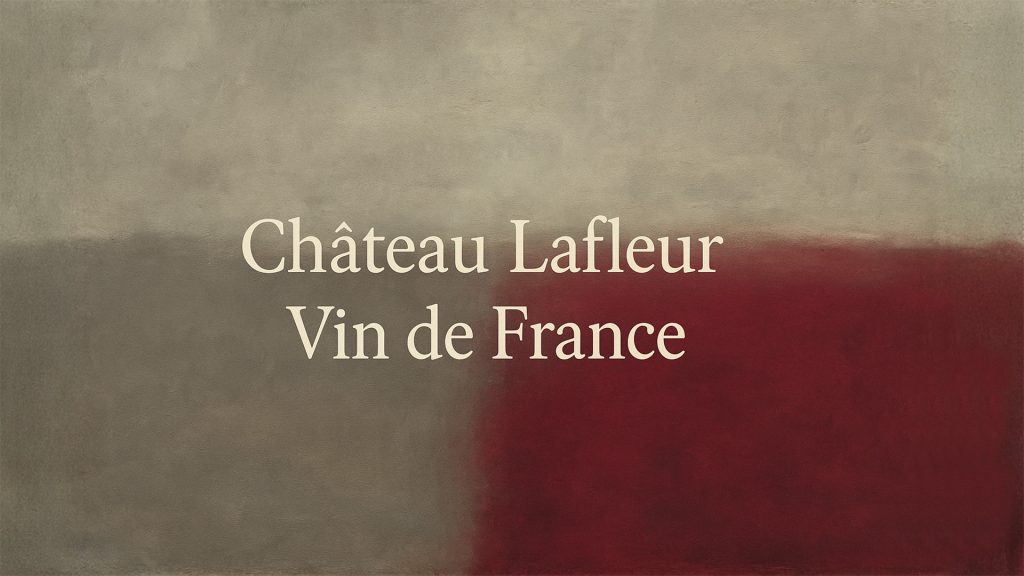The global wine industry faced a pivotal year in 2024, as outlined in the International Organisation of Vine and Wine (OIV)’s State of the World Vine and Wine Sector in 2024 report. Production hit a 60-year low, consumption declined in major markets, and vineyard areas shrank under relentless climatic and economic pressures. Yet, the sector’s resilience shone through, with international trade values steady at 35.9 billion euros, propelled by record-high prices. This article explores the report’s insights into vineyard trends, production, consumption, and trade, offering strategies for producers, exporters, importers, and policymakers to navigate challenges and seize opportunities.
1. Shrinking Vineyards: A Global Contraction
Global vineyard surface area fell by 0.6% in 2024 to 7.1 million hectares, a loss of 46,000 hectares and the fourth consecutive year of decline. Spain, the largest vineyard globally, held 930,000 hectares but saw a 1.5% reduction, shedding 14,500 hectares. France, second largest, declined by 0.7% to 783,000 hectares, while China, third globally, dipped by 0.4% to 753,000 hectares. Italy defied the trend, growing by 0.8% to 728,000 hectares, joined by modest gains in Romania (187,000 hectares, +0.1%), Greece (93,000 hectares, +0.4%), and Brazil (83,000 hectares, +1.6%). The European Union’s vineyard area dropped by 0.8% to 3.2 million hectares, with notable declines in Portugal (173,000 hectares, -5.1%) and Bulgaria (60,000 hectares, -7.3%). South Africa’s vineyards, impacted by 2015-2017 droughts, shrank by 1.5% to 120,000 hectares, while India’s 185,000 hectares grew by 1.8%, reflecting a 4.5% annual growth rate since 2019.
High production costs, aging vines, and climate challenges drove this contraction, particularly in Europe and South Africa. In Spain and France, declining wine consumption prompted vineyard removals, especially for wine grapes. Growth in emerging markets like India and Brazil signals rising domestic demand and viticulture investment. However, the shrinking wine grape vineyard base threatens long-term supply, urging producers to adopt climate-resilient varieties and sustainable practices like precision irrigation. Emerging regions offer expansion potential, but scaling requires infrastructure and expertise.
2. Wine Production: A Historic Low
Global wine production (excluding juices and musts) plummeted to 225.8 million hectolitres in 2024, down 4.8% from 2023 and the lowest since 1961’s 219 million hectolitres. The European Union, producing 138.3 million hectolitres, saw a 3.5% decline, its lowest since 2000. Spring frosts in Southern Europe, heavy rainfall, and prolonged droughts devastated yields, while disease pressure compounded losses. Declining consumption also led some producers to scale back, particularly in bulk wine. These factors created a supply crisis, likely sustaining high prices and challenging affordability.
Climate change’s impact was stark, with frosts in France echoing 1961’s catastrophic conditions. Wineries must adopt innovations like drone-based monitoring and soil health optimization to mitigate risks. Collaborative research, supported by the OIV, is critical to develop climate-adaptive viticulture and stabilize yields. Without such measures, further production declines could exacerbate supply constraints.
3. Declining Consumption: Shifting Preferences
Global wine consumption dropped to 214.2 million hectolitres in 2024, a 3.3% decline from 2023’s 221.5 million hectolitres, driven by high prices and changing consumer tastes. The USA, the largest market, consumed 33.3 million hectolitres but fell by 5.8%. France (23.0 million hectolitres, -3.6%) and Italy (22.3 million hectolitres, +0.1%) followed, with Italy near stable. Germany (17.8 million hectolitres, -3.0%) and the UK (12.6 million hectolitres, -1.0%) also saw reductions. Spain (9.9 million hectolitres, +1.2%), Portugal (5.6 million hectolitres, +0.5%), and Russia (8.1 million hectolitres, +2.4%) showed resilience, with Portugal’s consumption 10% above pre-pandemic levels (2015-2019). China’s consumption plummeted by 19.3% to 5.5 million hectolitres, continuing a decline since 2018, while Canada (4.6 million hectolitres, -6.4%) and Japan (3.1 million hectolitres, -4.4%) also fell. South Africa (4.3 million hectolitres, -2.8%) remained Africa’s most dynamic market, and Australia (5.3 million hectolitres, -2.7%) held steady.
High prices, fueled by low production and inflation, deterred consumers in traditional markets. Younger demographics increasingly favored low/no-alcohol beverages, craft beers, or spirits, eroding wine’s share. Economic pressures constrained spending, while resilient markets like Spain and Russia reflect cultural affinity or economic recovery. China’s decline ties to economic slowdown and a retreat from luxury goods. Wineries should diversify into sparkling, premium, or low-alcohol wines and use digital marketing to engage younger consumers with sustainable storytelling. Emerging markets like Russia and South Africa offer growth but require tailored strategies.
4. International Trade: Resilience Through High Prices
4.1 Export and Import Dynamics
International wine trade remained robust in 2024, with export volumes stable at 99.8 million hectolitres (-0.1% from 2023) and values reaching 35.9 billion euros, supported by a record-high average price of 3.60 euros per litre. Italy led exports at 21.7 million hectolitres (+3.2%), followed by Spain (20.0 million hectolitres, -4.5%) and France (12.8 million hectolitres, +0.7%). France topped export value at 11.7 billion euros (+2.4%), followed by Italy (8.1 billion euros, +5.6%) and Spain (3.0 billion euros, +1.4%). Germany imported 12.7 million hectolitres (-6.9%), the UK 12.6 million hectolitres (+2.4%), and the USA 12.3 million hectolitres (+0.1%), with the USA leading import value at 6.3 billion euros (+1.6%).
Subscribe to our newsletter
4.2 Key Product and Market Trends
Bottled wine dominated exports in 2024, accounting for 50.8% of volume (50.8 million hectolitres) and 67.0% of value (24.0 billion euros) at 4.7 euros per litre, a 1.9% price increase. Sparkling wine held 10.9% of volume (10.9 million hectolitres) and 23.8% of value (8.5 billion euros), with Italy’s Prosecco exports soaring by 12%, reflecting its success in accessible, versatile sparkling categories. Bulk wine volume grew by 3.3% to 33.3 million hectolitres, priced at 0.8 euros per litre.
In key markets, Chile’s exports surged by 14.4% to 7.8 million hectolitres, driven by diverse offerings. China’s imports rose by 13.7% to 2.8 million hectolitres, hinting at Asian recovery, while Australia’s exports increased by 6.9% to 6.5 million hectolitres, bolstered by premium wines.
4.3 Transformation Pathways
High prices offset low volumes, sustaining trade value. Italy’s Prosecco export growth, up 12% in volume, stands out as a 2024 success story. Amid weak global consumption and production declines, Prosecco’s rise reflects its long-term focus on light, approachable positioning, affordable pricing, and global brand-building. These vibrant, versatile sparkling wines outperform traditional reds, offering a transformation blueprint for other regions. Spain’s bulk wine decline (-6.9%) contrasts with France’s premium bottled wine focus. The UK’s import recovery and China’s import growth signal stabilizing demand, though declines in Germany and the Netherlands show uneven recovery. Exporters should prioritize premium and sparkling segments, while importers in stable markets like the UK and Canada (3.8 million hectolitres, +0.7%) offer marketing opportunities.
5. Challenges and Opportunities
The industry faces steep challenges: climate change threatens yields, as seen in the EU’s 138.3 million hectolitre output; declining consumption in markets like the USA (-5.8%) and China (-19.3%) reflects shifting preferences; and low production (225.8 million hectolitres) and high prices (3.60 euros/litre) strain affordability. Opportunities, however, are plentiful. Innovations like climate-resilient grape varieties and precision agriculture, as practiced in South Africa, mitigate risks. Emerging markets like Russia (8.1 million hectolitres, +2.4%) and India (185,000 hectares) offer growth, especially for affordable sparkling wines. Sustainability, including carbon-neutral production, appeals to eco-conscious consumers in Germany and the UK. Italy’s Prosecco success and Chile’s export recovery (+14.4% to 7.8 million hectolitres) highlight the value of premium, consumer-aligned offerings.
6. Future Outlook
Short-term (2025-2027), supply constraints, with production unlikely to exceed 225.8 million hectolitres, will keep prices high, hindering consumption recovery. Investments in drought-resistant rootstocks and AI-driven yield forecasting are essential. Long-term (2030 and beyond), growth in emerging markets like India and Russia could offset traditional market declines. The industry will shift toward premium, sustainable, and low-alcohol wines. Collaboration through OIV-led research, digital marketing, and policy incentives for replanting and sustainability will drive resilience.
7. Forging a Sustainable Future
The 2024 OIV report highlights a challenging year: production at 225.8 million hectolitres, consumption at 214.2 million hectolitres, and vineyards at 7.1 million hectares. Yet, trade values of 35.9 billion euros reflect resilience, driven by high prices and premium wine demand. Producers must act now, adopting adaptive technologies, diversifying into sparkling and low-alcohol wines, and engaging younger consumers through sustainable storytelling. Importers and exporters should leverage stable markets and digital platforms, while policymakers can support replanting and sustainability initiatives.
Looking forward, industry cooperation is vital. Sharing climate adaptation strategies, fostering trade partnerships, and promoting sustainability will address challenges. Despite short-term setbacks, the global wine market’s long-term vitality endures, fueled by innovation, emerging markets, and a commitment to quality, ensuring a vibrant, sustainable future.
References
OIV (2024). State of the World Vine and Wine Sector in 2024. Available at: https://www.oiv.int/press/state-world-vine-and-wine-sector-2024-adaptation-cooperation
State of the World Vine and Wine sector in 2024 report
PPT Presentation



